Category: fashion
11/30/10 05:11 - 52.ºF - ID#53178
Patterning and Sewing a Winter Coat
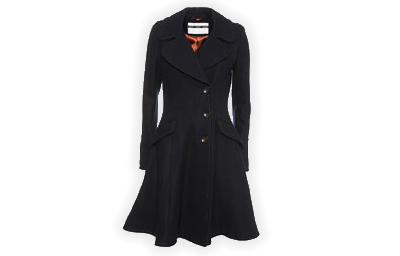
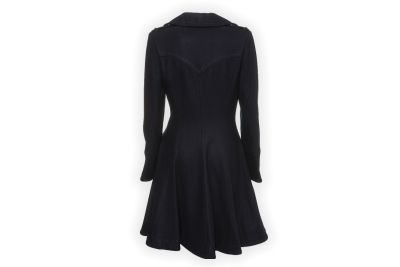
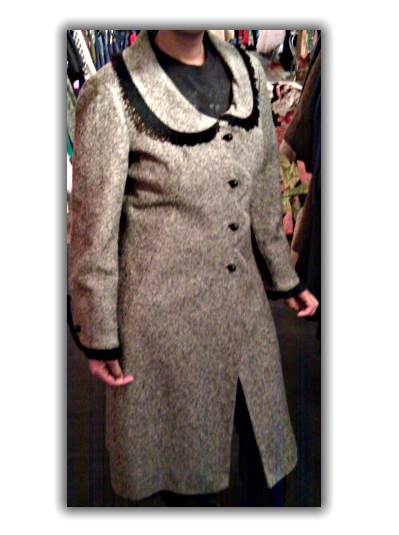
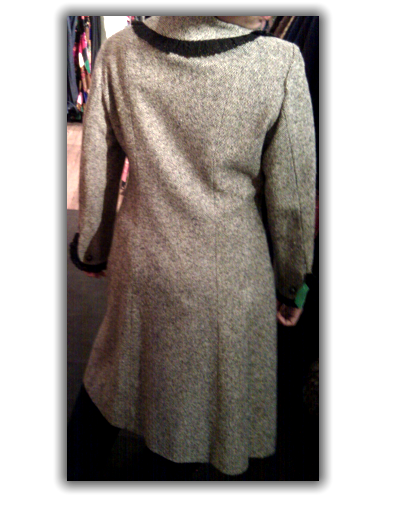
The trouble is how does one make a pattern and sew a coat based on photographs? Does anyone have any experience in drawing patterns (with appropriate sizing) looking at photographs alone?
Permalink: Patterning_and_Sewing_a_Winter_Coat.html
Words: 68
Location: Buffalo, NY
Last Modified: 12/01/10 10:40
Category: i-tech
11/21/10 10:29 - 34.ºF - ID#53146
Twittering no more
Permalink: Twittering_no_more.html
Words: 3
Location: Buffalo, NY
Last Modified: 11/21/10 10:29
Category: dance
11/21/10 02:15 - 32.ºF - ID#53145
Salsera!

She is a true flowing river in spirit and I think I can hear this every time I see her flow in dance!
Permalink: Salsera_.html
Words: 29
Location: Buffalo, NY
Last Modified: 12/11/10 02:45
Category: dance
11/21/10 12:28 - 32.ºF - ID#53143
Salsero!
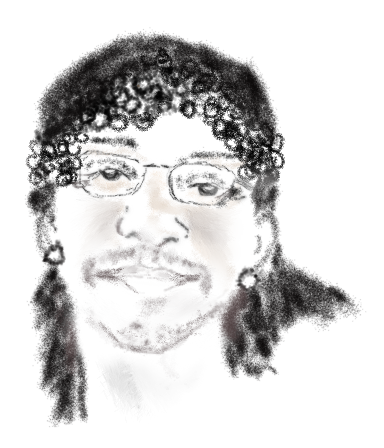
He is the beyond perfect fluid lead who makes it look so effortless, you want to work on those wobbly steps just to match 1/millionth of his grace! :-)
Permalink: Salsero_.html
Words: 31
Location: Buffalo, NY
Last Modified: 12/11/10 02:45
Category: dance
11/20/10 09:54 - 35.ºF - ID#53142
Scientific Salsa
The dance is a fascinating study in body dynamics. Quoting Joanna Bosse, who conducted ethnographic research into Salsa...
One of the most difficult aspects of salsa dance to convey to newcomers is the distinctive counter-body motion—a product of a particular combination of knee, hip, and ribcage movements.

Generally, the basic position requires one bent knee while the other remains straightened, and the basic movement involves alternating bent and straight knees. This juxtaposition of one bent knee and one straightened knee causes a secondary response as the hip above the straight knee juts out slightly. Simultaneously, the ribcage moves in the direction of the bent knee, opposite the direction of the extended hip.
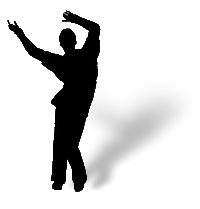
The position of the ribcage serves to balance the weight distribution of the extended hip. With each beat of the music, salsa dancers alternate bent and straight knees and direction of the ribcage, maintaining a level height (with little rise and fall or bobbing of the head) and a balanced center of gravity. Another secondary result of this motion (in addition to the hip movement) is that the arms move forward and back in small circles, following the direction of the ribcage and shoulders.
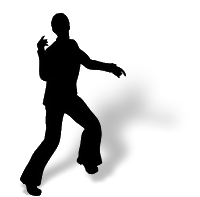
This combination of movements is very subtle and can be executed in a number of ways, depending upon other elements such as arm movement, posture, foot placement, and direction of knee movement; however, it was present to varying degrees among most, if not all, of the Latin American salsa dancers with whom I worked. This is not to say that all Latin Americans were great salsa dancers, but generally speaking this particular issue was not a problem. During my six years of fieldwork I never personally witnessed a salsa dancer specifically reference this aspect—the counter-body motion—in any way. They generally focused on the rhythm and placement of the footwork.
{and this is such an interesting observation...}
Though the Latin American salsa dancers I worked with understood that their hips were moving, their focal awareness was invested in the active engagement of the knees and virtuosic footwork.
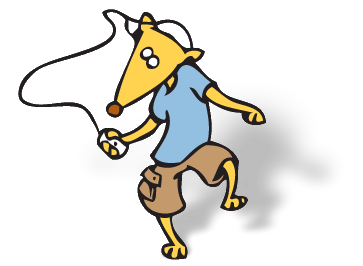
In contrast, outsiders to the genre overlooked the complex interplay of body movements and singled out only the movement of the hips as the root of salsa’s energy and perceived sexual appeal. Many fixated on the hip movement and worked exclusively on its performance, forsaking the necessary footwork and knee and ribcage movements that actually make it possible. This movement was not a typical component of their movement dialect and as such, it was very difficult to master and became something upon which newcomers fixated. This fetishization of hip movement on the part of my informants who were new to salsa resulted, in part, from the fact that the requisite counter-body movement was not a typical component of their movement dialect.
References (Taken in whole from):
Joanna Bosse. "Salsa Dance and the Transformation of Style: An Ethnographic Study of Movement and Meaning in a Cross-Cultural Context." Dance Research Journal 40.1 (2008): 45-64.
::READ PDF::
Permalink: Scientific_Salsa.html
Words: 519
Location: Buffalo, NY
Last Modified: 12/11/10 02:45
Category: dance
11/20/10 12:02 - 38.ºF - ID#53136
Spin baby Spin!

I guess I need to practise something called "spotting". It is described in detail at this

Apparently...
It takes practice and you have to go verrrry slowly at first to get the hang of it... but you will be rewarded by non-wobbly turns, balanced stops, and a better feeling in your stomach all around.
Dancing is best learned visually, so I strongly suggest asking your teacher to teach you how to spot your turns.
You know how if you get motion sick, you're supposed to look at a stationary point? That's the idea behind spotting. If you're looking at something stable, your body will feel stable.
Here's a basic way to practice it without worrying about turn technique:
1. Facing straight ahead, find something to fix your eyes on that is eye level or slightly above. This is your "spot". It may be a wall clock, poster, anything that isn't going to move.
2. Slowly start to turn your body, keeping your focus on the spot *and your head stationary*. At this point your body is turning under your head, almost as if your head is floating. Once your body has turned as far as it can without moving your head, turn a little more so that your eyes are looking sideways at the spot. You are looking over your shoulder.
3. Without moving your feet, and keeping your body as still as possible, turn your head to find the spot looking over the other shoulder. This is the opposite of what happened in step 2 - now your head is turning above your body!
4. Always focussing on the spot, complete the turn with your body.
So your body starts the turn, your head whips around to catch up and go ahead of it, and then your body catches up. Your eyes are on one spot except for when it turns so fast you don't have a chance to get dizzy.
Practise this slowly, stopping at each step to make sure there is full separation between the head and body turn. Do it in each direction. Once it starts feeling familiar, do it without stopping the (still slow) rotation.
Then, do it for the types of spins you do, and work it up faster and faster. While practicing alone, you'll have to find a suitable spot in the room. If you're doing partner dancing, often you'll be spotting on your partner's face.
The other way of avoiding dizziness while spinning only applies if you are not generating the spin or unable to spot without disturbing your position; that is, if you are spinning in a lift, or in a super-fast spin where the partner is really powering it and you are basically turning on the spot. In those cases, you have to learn to "blank out" and not see the room, just sense your own balance and then focus as soon as you exit the spin. Those are special circumstances though!
But I am afraid all that detail sounds a bit like this right now...

Maybe I just need shoes that will not put a brake on my spinning all the time...
Permalink: Spin_baby_Spin_.html
Words: 557
Location: Buffalo, NY
Last Modified: 12/11/10 02:44
Category: music
11/19/10 10:00 - 38.ºF - ID#53135
Stormy Weather
ahead for Buffalo.
But mainly, I wanted to dwell on just how awesome Etta James ALWAYS manages to sound.

I love that surly little grittiness in her voice.
I was listening to the song that (e:Paul) posted on his miss-you-already-(e:terry) post (e:paul,53129) today morning and I could only think of Etta James and didn't she capture the very feelings in her own twisty way so many decades back?!
I could hear this song so clearly in my head that I had to hunt it down!
Oh, and (e:libertad) reminded me of this one!
Permalink: Stormy_Weather.html
Words: 106
Location: Buffalo, NY
Last Modified: 11/19/10 10:54
Category: dance
11/19/10 08:44 - 38.ºF - ID#53134
Teach me how to Dougie
You have to appreciate how popularly arcane urban art can be! haha
PS: I saw this video first in my salsa class. My dance teachers were fascinated by the new moves. I was fascinated watching them so immersed. I love how involved they are with dance. It's almost as if dance flows like art and blood through them and they live for the thrill of dancing. They inspire me so much it's hard to express in words. They ARE art.
Permalink: Teach_me_how_to_Dougie.html
Words: 87
Location: Buffalo, NY
Last Modified: 12/11/10 02:44
Category: music
11/19/10 12:28 - 42.ºF - ID#53123
Hip Hop Love Hate
Does it all have to be about crime or calling women all kind of juvenile names?! It irritates me so much because I really dig the whole rhythm and the complex multi-layered arrangements of several hip hop artists but I just don't want to listen to them singing about how they clobbered someone to death (and not in a black noir way, either) or how their guns and drugs are so cool.
Of course, I have the option of turning off the vocal frequencies, but the problem is the vocals are so much a part of the melody and rhythm in the song, the song loses a LOT if you eliminate the vocals.
Man, how I wish they all sang/rapped in French!
Hippety hop dilemma.
Permalink: Hip_Hop_Love_Hate.html
Words: 163
Location: Buffalo, NY
Last Modified: 11/19/10 12:44
Category: music
11/15/10 10:30 - 41.ºF - ID#53109
Clave Crazy
I am nowhere close to deciphering this elusive rhythm in real salsa songs. But the funny thing is I can now hear it clear as day in Prodigy's d&b hit.
(Yeah, I know. Weirdest video ever. And I have no idea what they are croaking on about in the middle of all those raving-loony-peeping-into-screen dance moves. They definitely need the hospital. Any hospital. But listen to that clave right there! Listen to that d&b clave!)
At this rate, I might start hearing the clave when people speak. Who knows...
PS: Being a bit salsa-clave-overzealous nutcase here but I also found a software called "The Salsa Rhythm Machine" at this
 I am going to give it a whirl and report back.
I am going to give it a whirl and report back.PPS: The Salsa & Merengue Society's website is an absolute delight
 It's so plain and innocuous but every little corner is a nifty surprise!
It's so plain and innocuous but every little corner is a nifty surprise! Permalink: Clave_Crazy.html
Words: 191
Location: Buffalo, NY
Last Modified: 11/15/10 10:49
Author Info
Date Cloud
- 12/21
- 12/15
- 02/15
- 01/15
- 11/14
- 08/14
- 04/14
- 02/14
- 11/13
- 07/13
- 09/12
- 08/12
- 07/12
- 04/12
- 03/12
- 02/12
- 01/12
- 12/11
- 11/11
- 10/11
- 09/11
- 08/11
- 07/11
- 06/11
- 05/11
- 04/11
- 03/11
- 02/11
- 01/11
- 12/10
- 11/10
- 10/10
- 09/10
- 08/10
- 07/10
- 06/10
- 05/10
- 04/10
- 03/10
- 02/10
- 01/10
- 12/09
- 11/09
- 10/09
- 09/09
- 08/09
- 07/09
- 06/09
- 05/09
- 04/09
- 03/09
- 02/09
- 01/09
- 12/08
- 11/08
- 10/08
- 09/08
- 08/08
- 07/08
- 06/08
- 05/08
- 04/08
- 12/07
- 11/07
- 10/07
- 09/07
- 08/07
- 07/07
- 06/07
- 05/07
- 04/07
Category Cloud
More Entries
After This
My Fav Posts
- Click the heart at the bottom of anyone's blog entry to add it here ;(

 mobile
mobile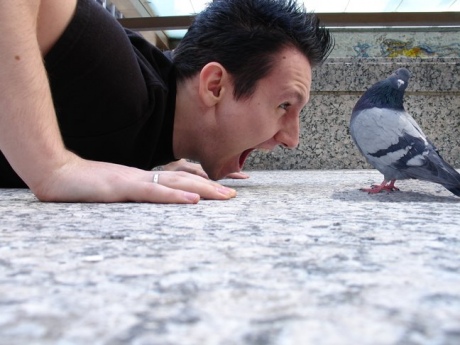


The wool and lace coat is more modern-looking than the gored coat.
Well, then I am hook, line and sinker deep into the femmy stuff. I LOVED everything in that vintage store that had brocade or lace. I didn't want to come away from the shop and my brother had to drag me out in the end.
PS: What do you think about the difficulty level of the vintage coat I just posted (apparently, it is from 1909)?
It is time consuming, as is any hand art/craft, but very satisfying. Building physical objects is neat. I've tried lots of different ones but crocheting is the one that keeps sticking.
I think the ability to sew and pattern is such a wonderful skill and art. People who master the art probably never have to wear stuff that doesn't fit them and look like a pelmet. It's time consuming and probably very frustrating... I sometimes wonder whether the end result is worth it to anyone who makes their own clothes. Maybe all the effort that went in makes it 100x more beautiful...
I used to sew as part of a 4-H club when I was a teenager. My last year I made a two-piece outfit out of this slippery blue satiny stuff that was really hard to work with. The top was double-breasted, partially lined with interfacing and satiny stuff, princess seams, complicated hemline. It may have had slight shoulder pads (it was the mid-80s, i think the summer before 10th grade, 1987?) The skirt had six panels, fluted, hidden zipper. Of course it fit me amazingly well because we fit it as we went along. My sewing instructor, Peg (one of those amazing real Christians) was so mad that I didn't win first place at the county fair that she gave me the difference between the second and first cash prizes (I think it was a dollar or two.)
I haven't sewed much since other than curtains and repairs - I've tried a couple times but Peg always coached me thru things and I just don't quite have the 3-D visualization/manipulation skills that a really good tailor/seamstress has.
If I find a coat I love and fits, I think it's just worth buying it. I'll end up wearing it until it wears out. I've had a series of (usually black) wool coats since I was in my teens. They usually last 5+ years and I patch the lining as it rips and tears. My coats are a fairly standard style, so I don't usually have to pay more than $200, usually about $120. That's a very low per-year cost.
Yeah, I never thought about the overlap point... I think those flowing things are called gores (but I am very new to all this sewing jargon).
I used to sew as part of a 4-H club when I was a teenager. My last year I made a two-piece outfit out of this slippery blue satiny stuff that was really hard to work with. The top was double-breasted, partially lined with interfacing and satiny stuff, princess seams, complicated hemline. It may have had slight shoulder pads (it was the mid-80s, i think the summer before 10th grade, 1987?) The skirt had six panels, fluted, hidden zipper. Of course it fit me amazingly well because we fit it as we went along. My sewing instructor, Peg (one of those amazing real Christians) was so mad that I didn't win first place at the county fair that she gave me the difference between the second and first cash prizes (I think it was a dollar or two.)
I haven't sewed much since other than curtains and repairs - I've tried a couple times but Peg always coached me thru things and I just don't quite have the 3-D visualization/manipulation skills that a really good tailor/seamstress has.
If I find a coat I love and fits, I think it's just worth buying it. I'll end up wearing it until it wears out. I've had a series of (usually black) wool coats since I was in my teens. They usually last 5+ years and I patch the lining as it rips and tears. My coats are a fairly standard style, so I don't usually have to pay more than $200, usually about $120. That's a very low per-year cost.
(e:heidi), have you made coats before? What makes a coat difficult or easy - is it the number of pieces? I went to this vintage store in NYC and fell in love with a coat but its price gave me heartburn. It was $456. I took a ton of pictures. I will post them as soon as my brother sends them to me.
(e:metalpeter), the coat I posted above is out of stock and fashion from a few years before and when it was in stock, I think the price was around $450. It's in part, the price and in part, the sizing that is making me lean towards starting this rather intimidating project. None of the coats I saw fit me well because of my strange measurements. Apparently, my shoulders are too narrow and my bust size is below the mentionable limit - so everything sags like a dowdy rag on me.
2. Not that i know anything about sewing any more But
3. I think there is a way that you can take pictures and from there figure out how to cut materials .
4. #3 being said I think you would need more pictures like of the coat open all the way laying front and backwards.
5. Again I would have no idea how to do it but I'm sure with the right stuff it can be done....
The Better question is since you like this coat why not just buy it.... I mean if you want to try to make it for fun or for a gift. But if you want to wear why not just spend the cash and have a nice coat....